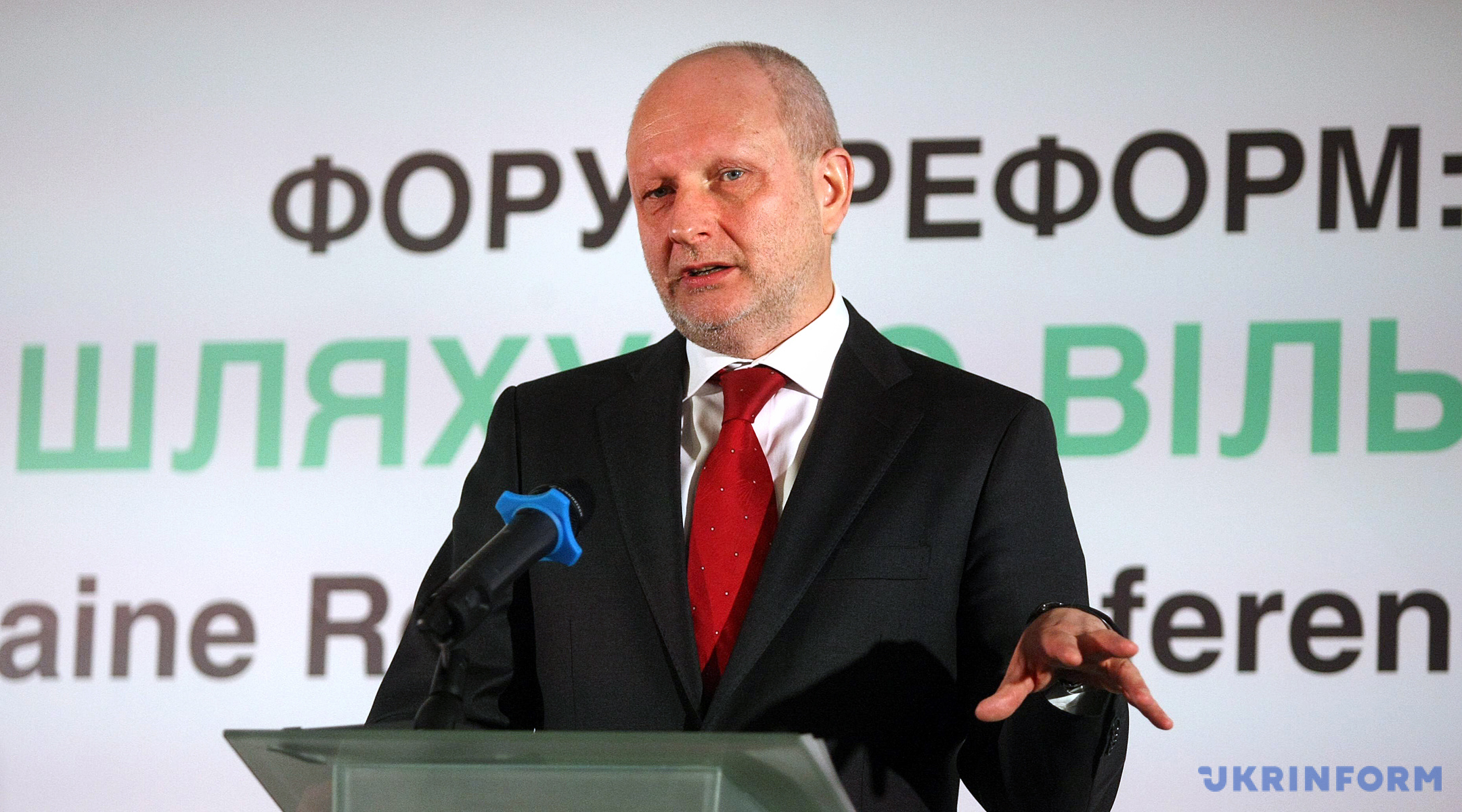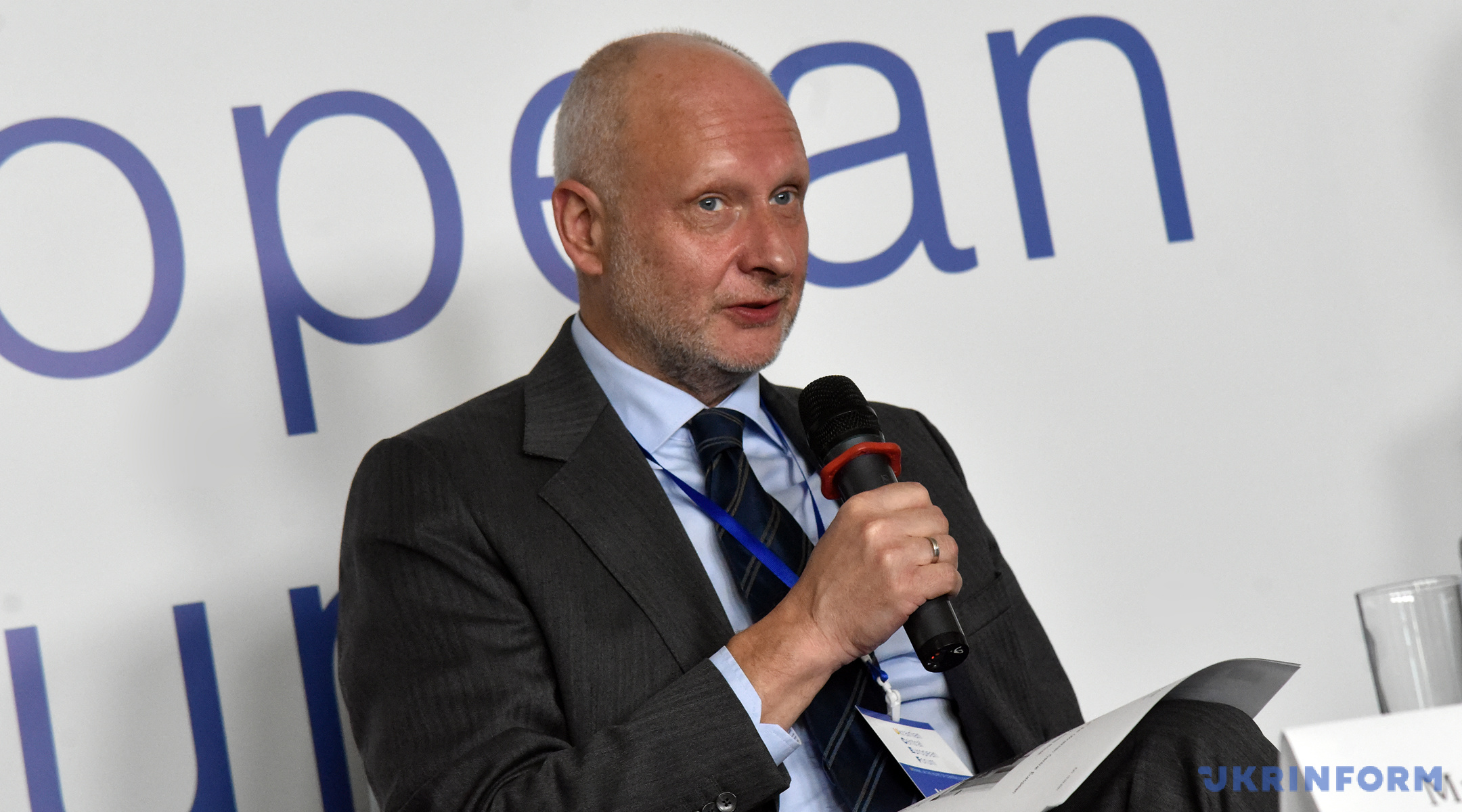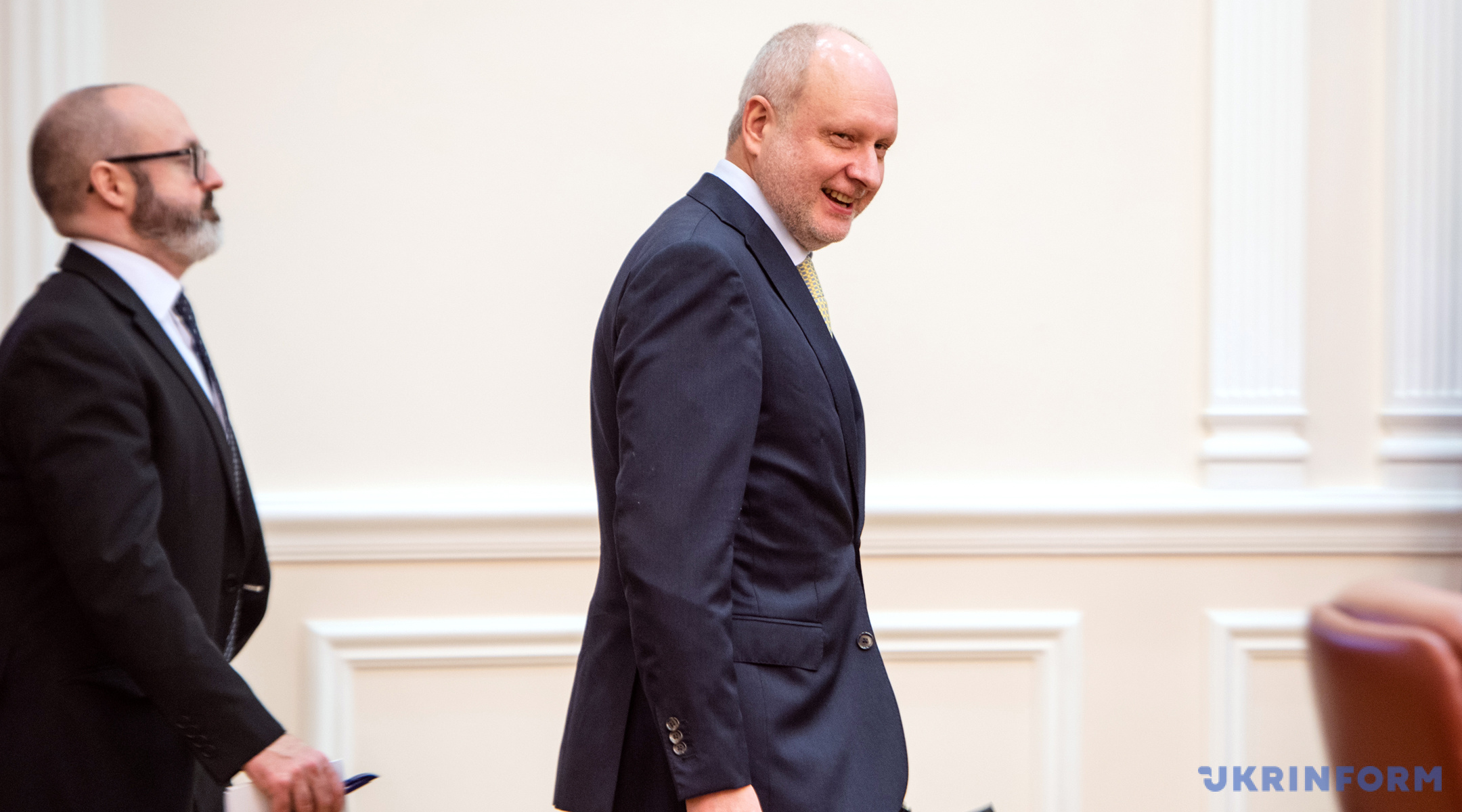The role of renewable energy around the world is growing with the new Green Deal, which has been adopted by many countries on the way to achieving climate neutrality. For Ukraine, the EU is an example and guide as its leadership promises to turn Europe into a climate-neutral continent by 2050. Against this background, today an active discussion is ongoing of hydrogen energy prospects, which also pursues the goal of reducing the dependence of economies on fossil fuels and stopping destructive climate change. Ukraine is primarily interested in this topic in terms of preventing an economic blow from the possible loss of gas transit revenues. So it was interesting to hear the opinion directly from the Green Deal champions.
Ukrinform asked a few questions to the Ambassador of the European Union to Ukraine, Matti Maasikas, who told us about the progress in developing green and hydrogen energy in the EU, attracting investment in these areas, and Ukraine's prospects in hydrogen production and shipment.
RENEWABLES HAVE BEEN LESS AFFECTED BY THE PANDEMIC
- What energy sources are currently developing the most in the EU? What are the goals of Europe in the development of renewable energy sources (RES)? How much investment does it need?
- Renewables are playing a major role in the European energy mix. Luckily, they have been less affected globally by the Covid-19 pandemic than other energy sources. Only biofuels for transportation were impacted more severely as consumption declined due to reduced travel and low oil prices. Falling capital costs enabled an unprecedented number of solar and wind energy plants to be installed globally. As a result, while electricity generation from coal, natural gas and nuclear decreased, renewables overtook fossil fuels for the first time as the EU’s main power source for the year 2020. Renewables now provide for 38% of EU electricity, followed by fossil fuels with 37% and nuclear with 25%.
Overall investment in renewables grew substantially in the EU: From EUR 32.9 billion in 2019 to EUR 48.8 billion in 2020. But the picture varies across different technologies, like wind and solar. To further support innovation and deployment in renewables, the European Commission will work on an EU Solar Energy Strategy in 2022. Its goal will be to remove existing barriers that are hampering the deployment of solar energy capacity.
Overall, for the EU, the year 2021 marked a step forward from setting out a comprehensive vision for climate neutrality to proposing and implementing the specific initiatives to achieve it. Key moments in this regard were the adoption of the European Climate Law (Regulation (EU) 2021/1119 of the European Parliament and of the Council of 30 June 2021 establishing the framework for achieving climate neutrality ‘European Climate Law) in June and the presentation of the “Delivering the European Green Deal” – the so-called ‘fit for 55’ package - in July 2021. Now the Member States are discussing the proposals.
In this framework, the European Commission notably proposed to raise the EU 2030 target for renewables from the current at least 32 % to at least 40 % of the Union’s gross final consumption of energy. In concrete terms, this means doubling our annual renewables capacity additions every single year in the next 9 years. The Commission also suggested setting up a complete framework for renewable energy deployment, addressing all sectors of the economy.
The offshore renewable energy strategy adopted in 2020 sets the ambition to deploy at least 60 GW of offshore wind energy and 1 GW of ocean energy by 2030 with a view to reaching, by 2050, 300 GW of offshore wind and 40 GW of ocean energy capacity.
Overall, annual investments related to energy services in 2021-2030 will need to increase by almost €400 billion per year compared to what we invested in the decade up to 2020.

- How does the EU support renewable energy producers?
- Clear targets and governance framework mean certainty for investors. Legislation has also allowed Renewable Energy Sources to access grids and be dispatched, and increasingly to compete on the market with other sources of energy. The types of support vary depending on the level of maturity of the technology. They include, for example, funding for innovation in less mature technologies such as ocean energy, while for competitive technologies such as photovoltaics or onshore wind the support is rather about allowing Renewable Energy Sources to compete on equal terms with other energy technologies.
The EU also works on an enabling framework, for example on administrative simplification and on establishing common principles for support schemes across the EU.
Financial support is also provided. One-third of the EUR 1.8 trillion investments from the NextGenerationEU Recovery Plan, and the EU’s seven-year budget will finance the European Green Deal. Renewable, clean and affordable energy is an essential part of it.
To encourage a greater uptake of renewable energy sources across the EU, the European Commission has established in 2020 a new EU financing mechanism - the renewable energy financing mechanism. It is based on the idea that the collective nature of the 2030 EU target for renewable energy should reflect the EU countries’ collective efforts. The mechanism will facilitate a more cost-effective roll-out of renewables across the EU, particularly in areas that have greater access to natural resources or are better suited in terms of geography.
- What are the EU's plans for nuclear energy?
According to Article 194 of the Treaty on Functioning of the EU, the choice of energy sources is competence of the Member States.
The EU, through the Euratom treaty, ensures highest nuclear safety standards where it is used, and ensures that nuclear material would not be diverted to purposes other than those for which they were originally declared.
BY 2030, EU TARGETS TO SEE 65% OF RENEWABLE ELECTRICITY
- How does Europe plan to cope with the need for shunting capacity as renewable energy production increases?
- The integration of very high shares of variable renewables is one of the challenges that must be tackled in the transition to decarbonised energy systems. Reaching the 40% renewable energy target by 2030 that I mentioned earlier implies more than 65% renewable electricity.
The first tool is the integration of the EU energy market that diversifies generation and consumption profiles and reduces the need for storage and backup generation. The EU keeps investing in better interconnection and grids, in particular through its TEN-E (Trans-European Networks for Energy) policy.
Innovation and technological developments already offer many possibilities. Improved weather forecasting, digitalisation and demand-side solutions improve the predictability and allow to better match generation and demand, while the cost of storage technologies falls fast.
With the Communication on Energy System Integration adopted in 2020, the Commission presented its vision of a renewables-based energy system of the future and of how to put it in place. It covers issues ranging from infrastructure planning and deployment to market design and storage, but also the increasingly important role of new energy carriers such as hydrogen.
The fast growth of electric cars also offers the possibility to use a vast network of battery energy storages. The 2021 proposal for a revision of the renewable energy directive includes requirements to foster the role of battery systems in the integration of renewable energy systems and to reward electric vehicles charging systems.

- What are the plans for the development of energy storage systems?
- The main energy storage reservoir in the EU is currently, and by far, pumped hydro storage. However, its potential for further growth is fairly limited.
As their prices plummet, new batteries projects are rising with lithium-ion batteries representing most of electrochemical storage projects.
To build up a viable manufacturing sector in Europe and consolidate technological and industrial leadership, the European Commission has identified batteries as a strategic value chain where the EU must step up investment and innovation to strengthen the industrial policy strategy.
Batteries Europe, launched in 2019, is the European technology and innovation platform of the European Battery Alliance, run jointly by the European Commission and stakeholders in the battery industry.
The Alliance covers all stages of the life cycle of batteries, from raw materials to recycling.
Ukraine is participating in the European Battery Alliance and has concluded a Memorandum of Understanding on a strategic partnership with the EU on critical raw materials and batteries in July 2021.
It is expected that new battery technologies will come to the markets in the coming years with better performance, lighter weight and lower prices.
They will become a key factor in the electrification and decarbonisation of wide areas of the economy.
AT INITIAL STAGE, GREEN TARIFF SEEMS TO HAVE FULFILLED ITS PURPOSE
- In Ukraine, payments to producers at the 'green tariff' put considerable pressure on the budget. At present, it has been agreed with the producers to reduce the 'green tariff', but the issue of its abolition is also being raised. Which way to support green generation will be optimal for Ukraine?
- The green tariff in Ukraine was designed as a mechanism to attract investments into the renewable energy sector at the time when this industry was just starting up. In between 2017 and 2020 Ukrainian renewable energy sector has grown 5.6 times in terms of installed capacity and 4.8 times in terms of electricity supplied to the grid. In 2020 renewable energy producers supplied 6.8% of the entire electricity produced in the country. This sector has attracted tangible direct foreign investments from International Financial Institutions and European energy companies among others. As such, the green tariff has fulfilled its purpose at this initial stage.
We share the common understanding with the Ukrainian authorities that going forward, there is a need for a more balanced approach to the support of renewable energy – competitive auctions for the right to build and supply renewable energy. This is a proven way to ensure green energy production at the lowest possible price. This model, along with others such as direct supply of green energy to commercial and industrial consumers that see an advantage in paying premium for green energy, production of green hydrogen etc., is what will drive Ukraine’s green transition in the future. In Ukraine, the law on auctions is already in place and it is time to start practical implementation.
However, it is of utmost importance to protect and have a fair and transparent treatment of the investors that took a risk and already invested into the renewable energy in Ukraine under the green tariff regime. As a state, Ukraine has made these investors a promise and struck a deal that involved the green tariff for a number of years in return for investments. To change this deal retroactively now, when the investments have been made and projects have been implemented, would undermine the trustworthiness of Ukraine and will severely damage investor confidence. It also risks to be overturned by the international arbitrage courts.
A consensus should be found through an inclusive process and dialogue as was demonstrated in 2020 when most of the renewable energy investors and the government have signed a Memorandum of Understanding that allowed Ukraine to reduce green tariff by as much as 15%. It is of utmost importance for Ukraine to continue to implement provisions of the Memorandum of Understanding and of Law No 810, including timely and full settlements with producers of electricity from renewable energy sources.

- How does Europe plan to develop hydrogen energy? What investments and from what sources do you plan to attract?
- Renewable hydrogen is an important part of the solution to meet the 2050 climate neutrality goal of the European Green Deal, and can contribute to the GHG emissions reduction target of 55% by 2030. Thanks to technical progress in recent years, clean hydrogen is expected only to become cost-competitive with fossil-based hydrogen from 2030 onwards. The EU target for green hydrogen production is 6 GW of renewable electrolysers by 2024, and 40 GW by 2030.
Renewable hydrogen is the most compatible option with the EU’s climate neutrality and zero pollution goal in the long term and the most coherent with an integrated energy system. In the short and medium terms, however, other forms of low-carbon hydrogen are needed, primarily to rapidly reduce emissions from existing hydrogen production and support the parallel and future uptake of renewable hydrogen.
In some sectors, the potential for quick deployment of existing renewable technologies is already large. In other, such as high-temperature industrial application or aviation and maritime, it is significantly lower. In these sectors, the emissions can be cut if hydrogen-based technologies replace the existing ones, provided that the hydrogen itself is produced using renewable electricity
The Commission has therefore this summer proposed new targets for the market uptake of renewable hydrogen. These targets reflect the minimum to be achieved to be ready for the future uptake of these new renewables.
We also see a great industry interest in renewable hydrogen. According to industry, there are plans to develop around 60 GW of electrolyser projects by 2030, resulting in around 6.2 million tonnes of renewable hydrogen production by 2030. In December, the European Commission plans to propose rules for developing a hydrogen network in the EU and enhancing cross-border trade.
- How is the explosiveness of hydrogen solved?
- Some standards already exist. The EU research institutions, through specific projects, are looking into safety issues in storing and distributing hydrogen, specifically for transport applications. There are efforts underway to standardise them at EU level and globally.
How do you assess Ukraine's prospects in hydrogen production and transportation? Hydrogen energy currently requires significant investment. Where can Ukraine get investments to implement such a direction?
The production of hydrogen is very energy-intensive. Its use should therefore be targeted to those sectors where it is most needed. It requires that a sufficient amount of renewable energy is available. The priority for Ukraine, also in terms of hydrogen development, should therefore be – as in the EU - a significant extension of its renewable production capacity.
Hydrogen Europe, the European industry hydrogen association, estimates that Ukraine could have in 2030 a significant production of ammonia (produced with hydrogen) and also hydrogen produced by renewable electricity, which could then be exported via pipelines to the EU. A lot of work is still needed and the EU can help facilitate the transport of hydrogen to EU markets.
The EU is interested to expand its cooperation with Ukraine on this topic and to integrate Ukraine into a developing EU hydrogen market. This would require a discussion about the further transformation of the Ukrainian energy sector, common rules and standards, and investment conditions.
- When can hydrogen energy become widespread?
- According to current estimates, we consider that in around a decade renewable hydrogen could become competitive and a hydrogen ecosystem develop in Europe. The Commission is supporting this by creating the necessary legal framework, both in Europe and globally, to provide certainty for investors.
Valentyn Marchuk, Kyiv
